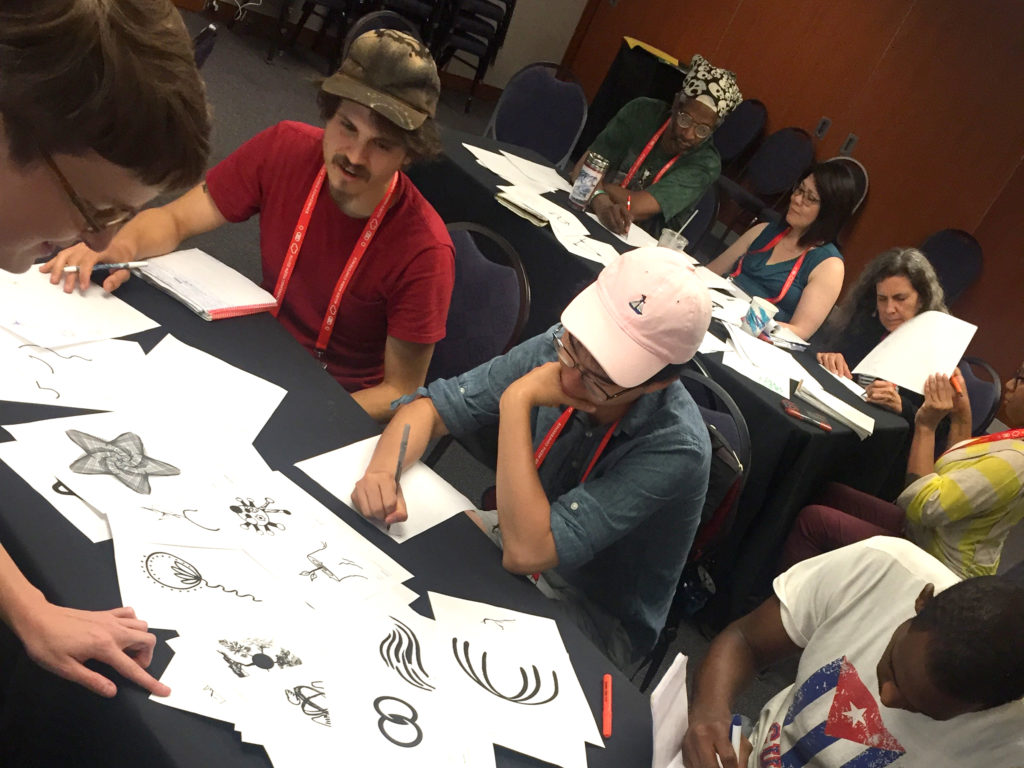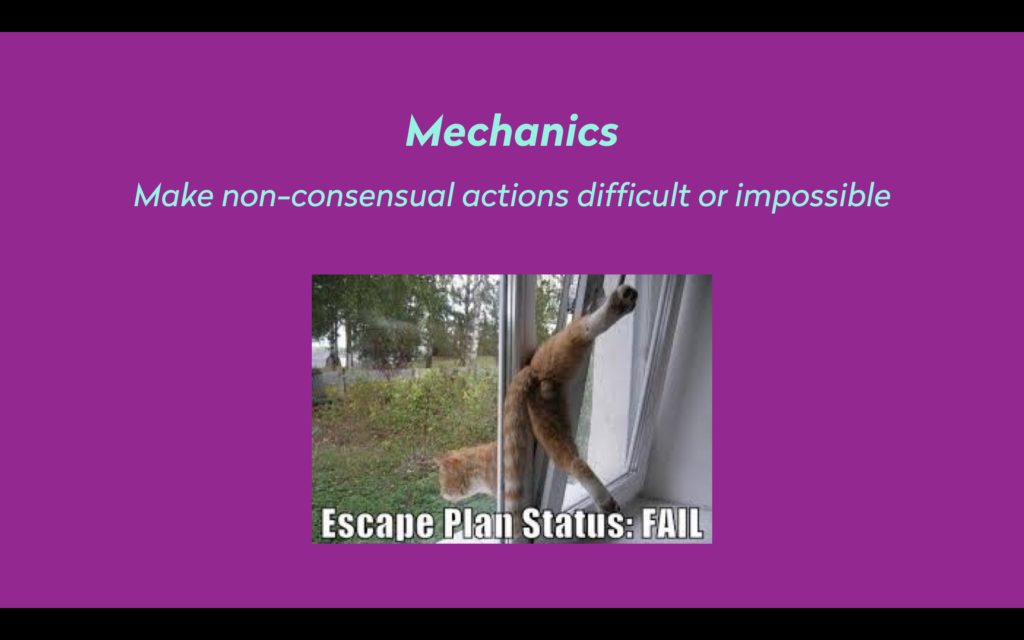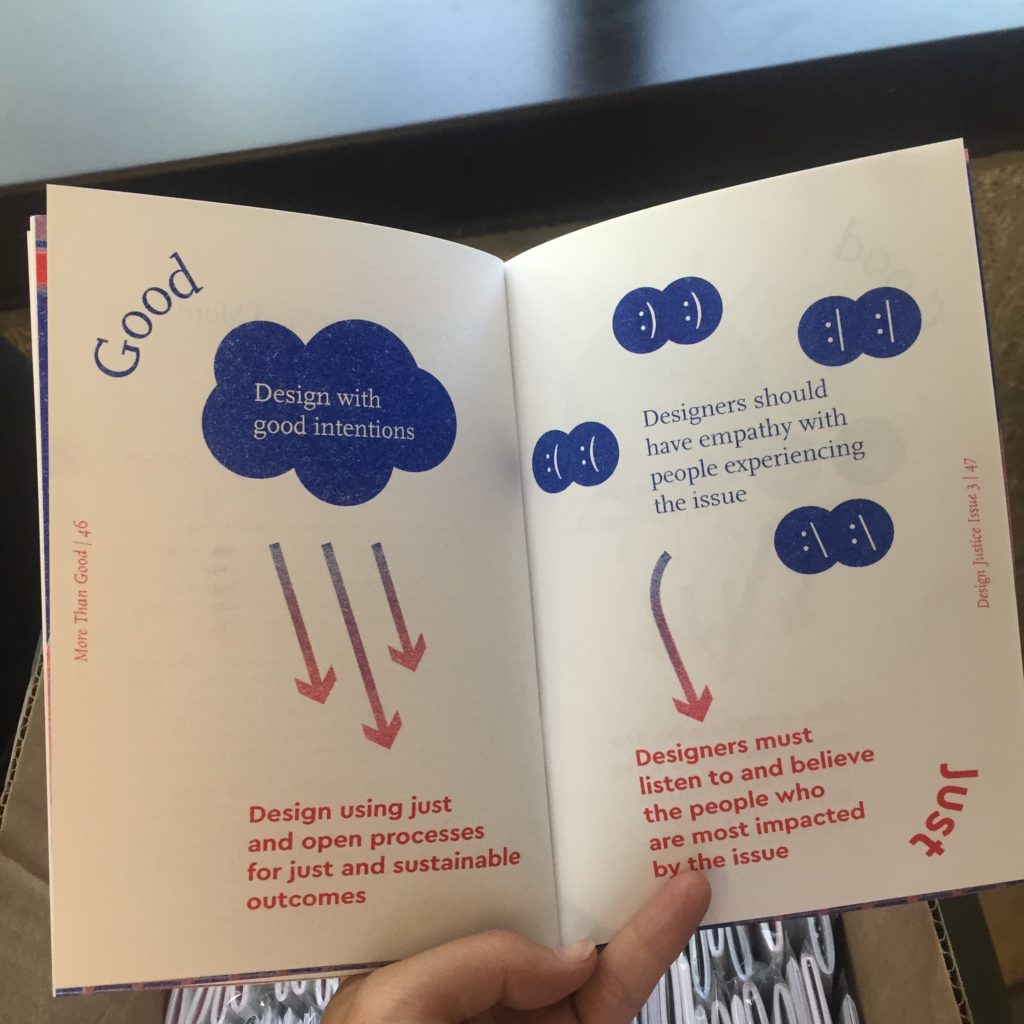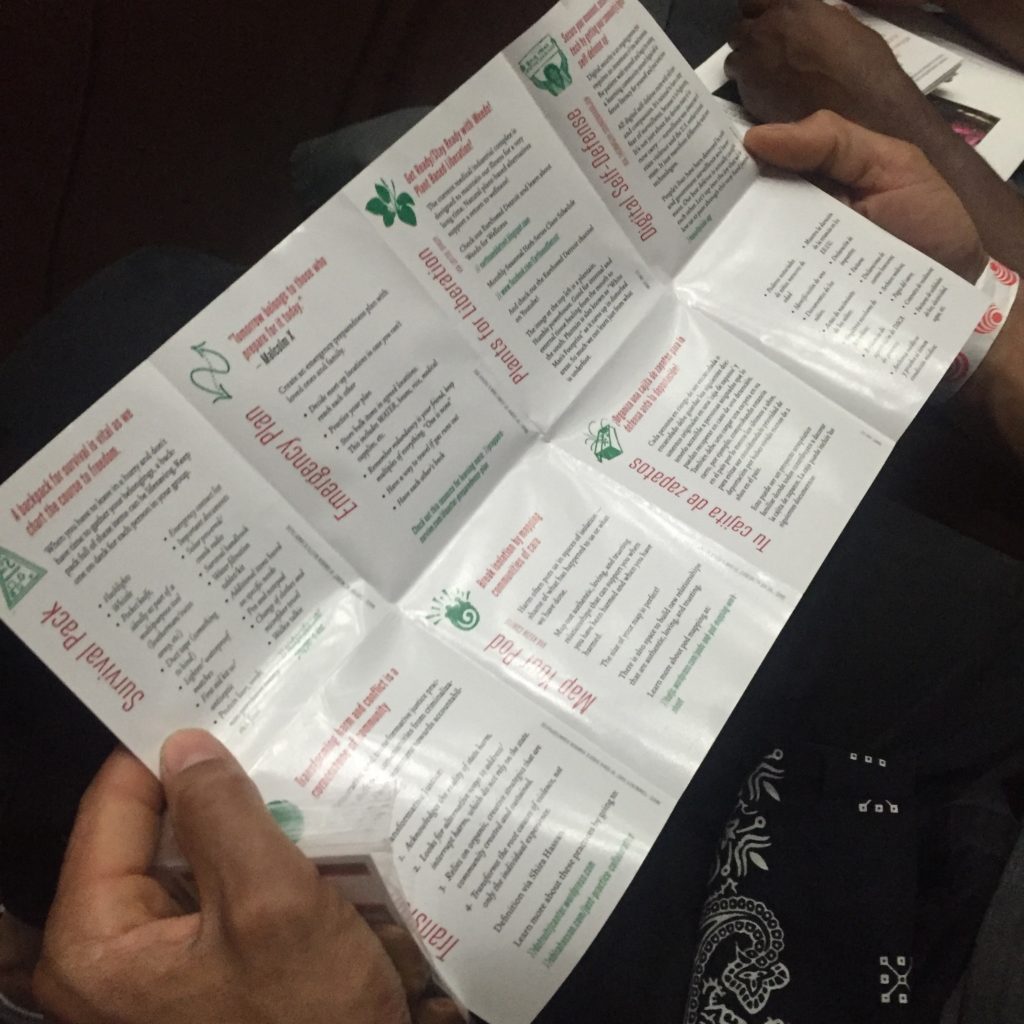Each June, I head to Detroit to join hundreds of designers, artists, technologists, and organizers who are using media to imagine and build more just futures. The beauty of the Allied Media Conference is its unwavering focus on media strategies that are working for — and developed by — communities that are marginalized and threatened by mainstream media narratives.
This focus means that we leave the AMC with a sense of hope that comes from learning how to more skillfully tell our stories and communicate with each other. That sense of possibility is what so many of us in attendance were craving, particularly in this moment. Fractures in society have become more evident, and with them comes the anxiety that these fractures could be replicated in our communities and our movements.
This year’s conference theme, “Get Ready, Stay Ready” spoke to this sense of urgency. Inspired by a day-long training in October 2016 on disaster preparation in communities of color, AMC 2017 focused not just on fighting and surviving, but also healing, creativity, joy, and celebration, which are “life-giving resistance strategies for long-term resilience.”
For me, the AMC has been a generative space to hear about and practice ideas I might not otherwise encounter. (Check out all these sessions!) It’s also been a kind of laboratory where I can offer my own practices and ideas, experiment with how I share them, and gather feedback from a cross section of brilliant media makers on how to take all this work to the next level.
This year I was honoured to participate in multiple ways.

Storytelling + Design + Radical Archives
In the Radical Libraries and Archives Track, I co-presented with Gracen Brilmyer a session called The Vision Archive: Picturing the World We Want to Live In. The session marked the official beta launch of visionarchive.io, a community-owned library of images created by social movement artists and organizers.
We began by talking about the ways in which mainstream archives inscribe controlling narratives on marginalized communities, and how when we create our own archives, we have agency in how our stories are told and used.
In pairs, participants shared memories of movement victories, drawing out a common thread between the two stories. They then selected images from the Vision Archive that corresponded to that common thread, either visually or conceptually. Using the icons as a starting point, the pairs created rough, hand drawn poster layouts to communicate and celebrate the shared concepts.

Building Consentful Technologies
For the Electric Dreams, Digital Futures track I co-presented a session with Dann Toliver called Building Consentful Technologies. Dann and I have been working for several years on an impact visualization app called the Ripple Mapping Tool, which we conceived of as a way for movements and organizations to better understand and communicate the impact of their work.
However, recently we’ve become concerned about some of the privacy and security issues that the tool raises. Rather than abandoning the project (an option I’d seriously considered) or forging ahead despite the risks it posed particularly for communities targeted by state surveillance and internet trolls, we realized that reframing our work in terms of consent and consent culture would give us a vision to work within.
We shared that vision at the AMC, breaking down what consent and consent culture are in intimate or real life relationships. Our interactions with technology are also relationships, so how could we bring learnings and thinking from anti-violence movements into our digital lives?
Participants discussed the technologies that they are using and building, and the consent issues those tools raise. As a group, we discussed policies, features, processes, and standards that we could implement in order to build more consentful technologies. We will be sharing these insights in zine form in the near future — stay tuned!

Design Justice returns to the AMC
With the Design Justice Network, I co-presented our planning/strategy session. As a group that originated from ideas and discussions at the AMC, it made sense to bring big questions about where we were going back to conference participants. In the session, we shared the history of the network and our principles, then broke into small groups to discuss questions like “How do we apply these principles in our work?”, “What is the structure of the network?” and “What are some actions that we can commit to locally/regionally?”
I also contributed an article to Issue 3 of the Design Justice zine. “Our Communities Need More Than Good,” which makes distinctions between design for good, which does not challenge the underlying structures that create the conditions of injustice, and design justice, which seeks fundamental change using design as well as in design itself. I laid out the zine with Victoria Barnett, and the brilliant Taylor Stewart designed the cover.

Get Ready, Stay Ready
Each AMC ends with a moving closing ceremony. This year, it was a culmination of the Get Ready, Stay Ready sessions and conversations that had been happening over the weekend. The ceremony was at once a healing and centering experience as well as a call to action to lovingly protect our communities from threats to our survival and our cohesion.
In collaboration with the Conscious Community Co-operative (C3) and Ill Invincible, we designed a one-page zine to share collective protection skills and strategies. Included with the zine was a packet of seeds to plant and sustain us.
Most of the images from the zine are from the Vision Archive, and were created by various artists and designers in collaboration with community organizers.
•••
Each year I leave the AMC feeling nourished and ready for the months ahead. I am grateful to all the participants, organizers, presenters, and coordinators who hold this beautiful space where we can explore what it means to be our whole selves.